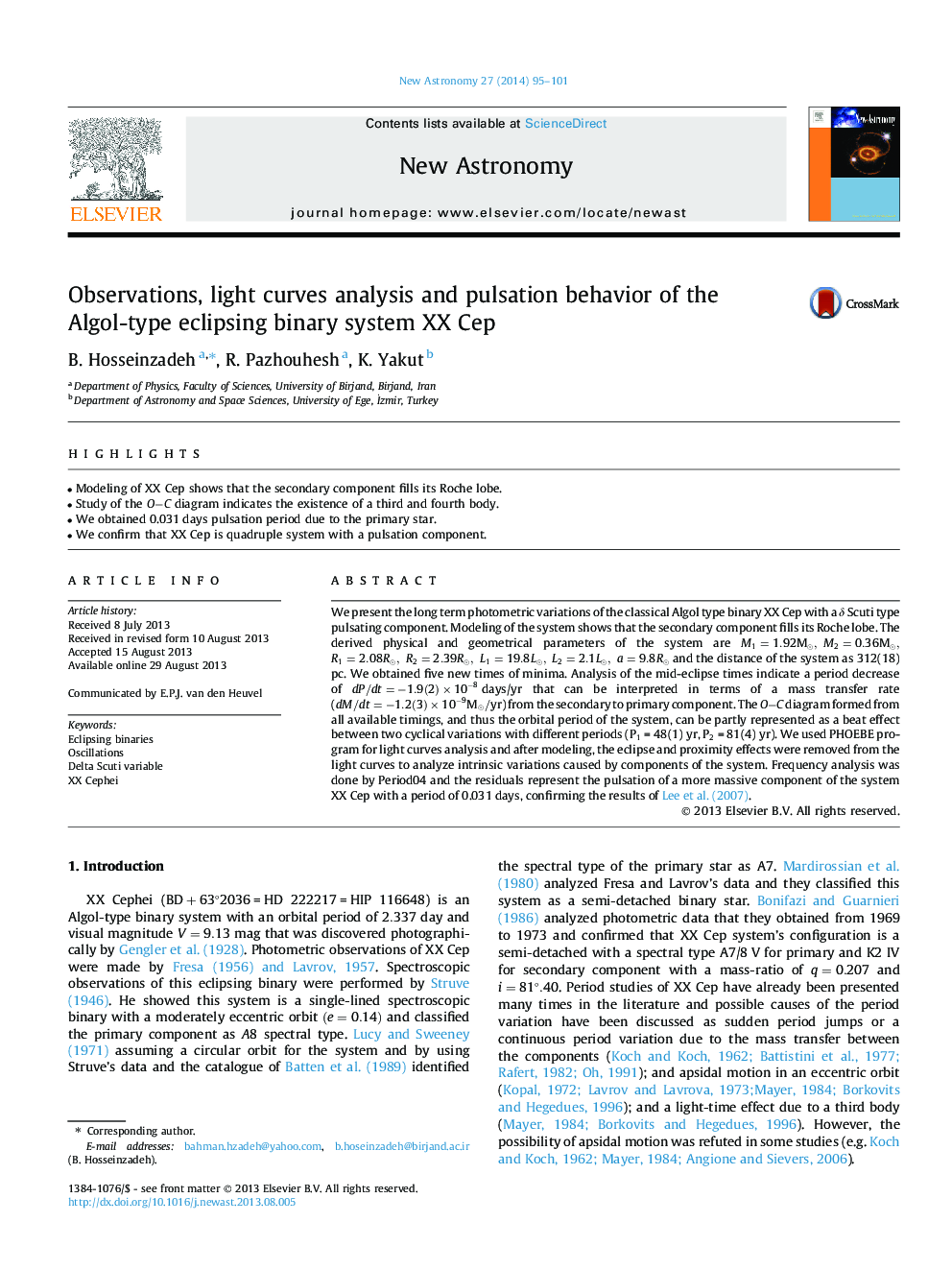| Article ID | Journal | Published Year | Pages | File Type |
|---|---|---|---|---|
| 1779055 | New Astronomy | 2014 | 7 Pages |
Abstract
We present the long term photometric variations of the classical Algol type binary XX Cep with a δ Scuti type pulsating component. Modeling of the system shows that the secondary component fills its Roche lobe. The derived physical and geometrical parameters of the system are M1=1.92Mâ,M2=0.36Mâ,R1=2.08Râ,R2=2.39Râ,L1=19.8Lâ,L2=2.1Lâ,a=9.8Râ and the distance of the system as 312(18) pc. We obtained five new times of minima. Analysis of the mid-eclipse times indicate a period decrease of dP/dt=-1.9(2)Ã10-8 days/yr that can be interpreted in terms of a mass transfer rate (dM/dt=-1.2(3)Ã10-9Mâ/yr) from the secondary to primary component. The OâC diagram formed from all available timings, and thus the orbital period of the system, can be partly represented as a beat effect between two cyclical variations with different periods (P1 = 48(1) yr, P2 = 81(4) yr). We used PHOEBE program for light curves analysis and after modeling, the eclipse and proximity effects were removed from the light curves to analyze intrinsic variations caused by components of the system. Frequency analysis was done by Period04 and the residuals represent the pulsation of a more massive component of the system XX Cep with a period of 0.031 days, confirming the results of Lee et al. (2007).
Keywords
Related Topics
Physical Sciences and Engineering
Physics and Astronomy
Astronomy and Astrophysics
Authors
B. Hosseinzadeh, R. Pazhouhesh, K. Yakut,
